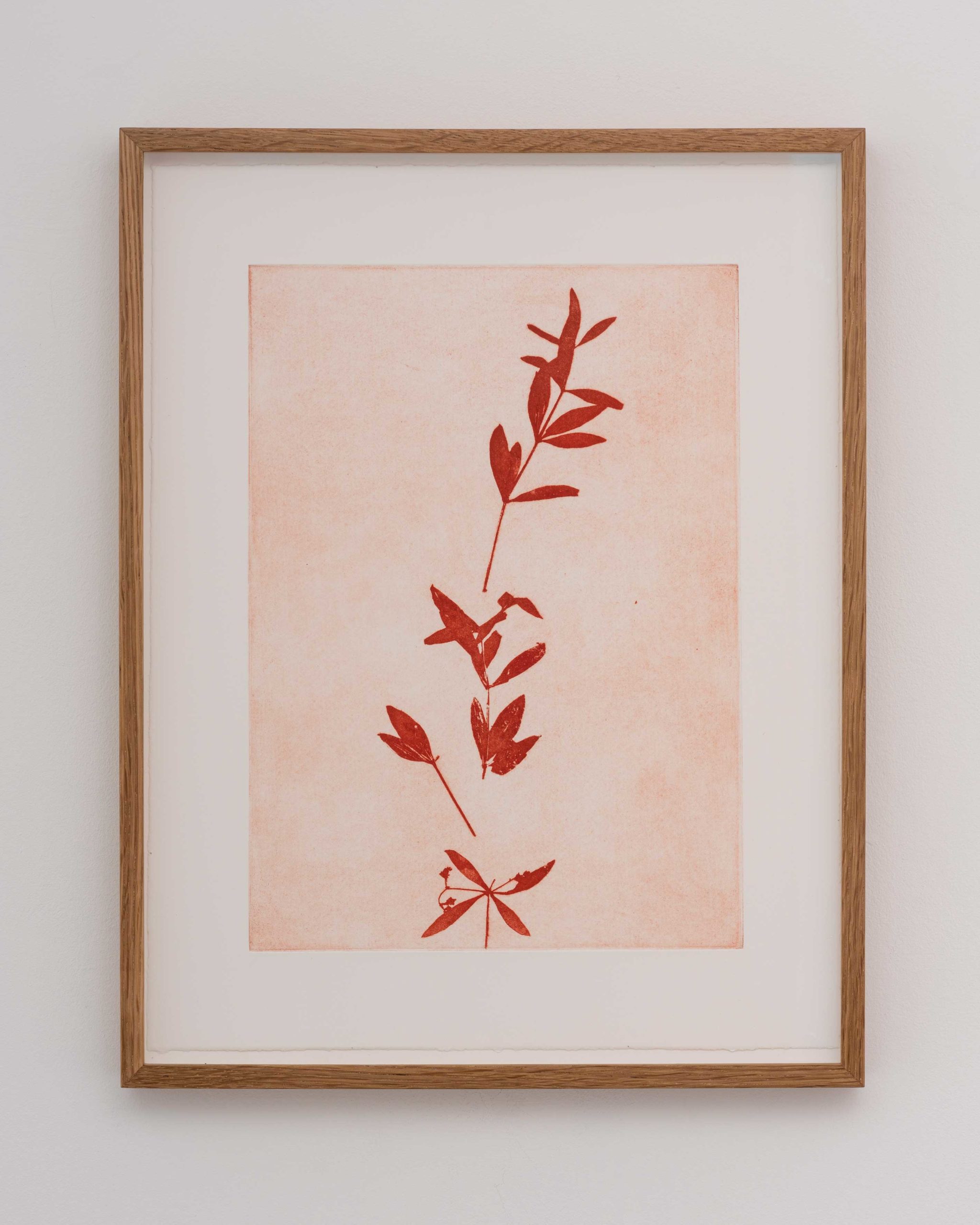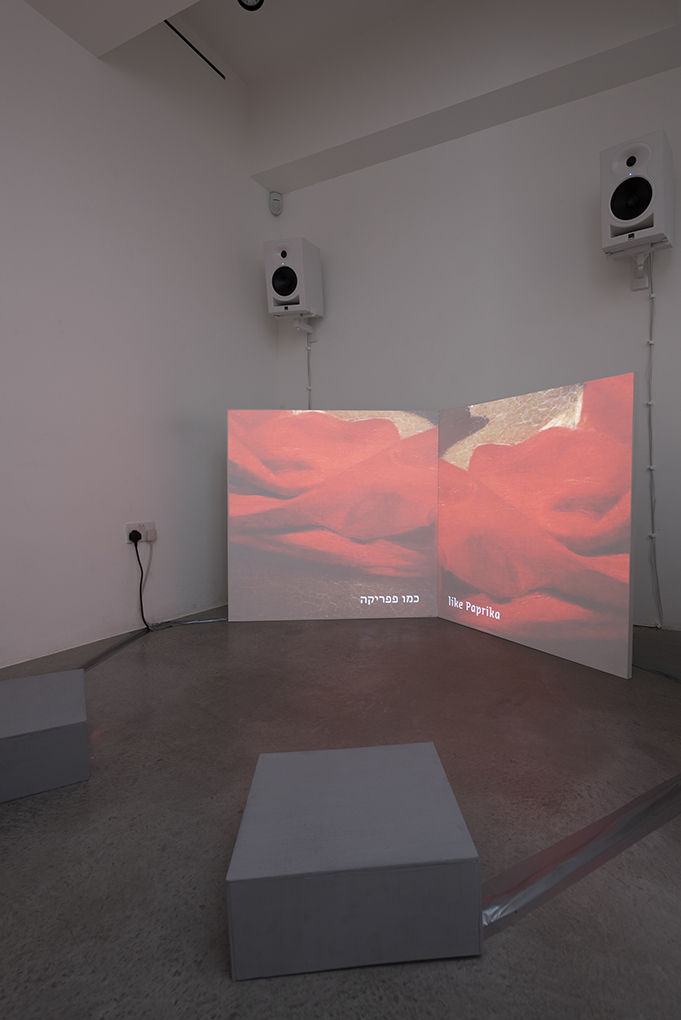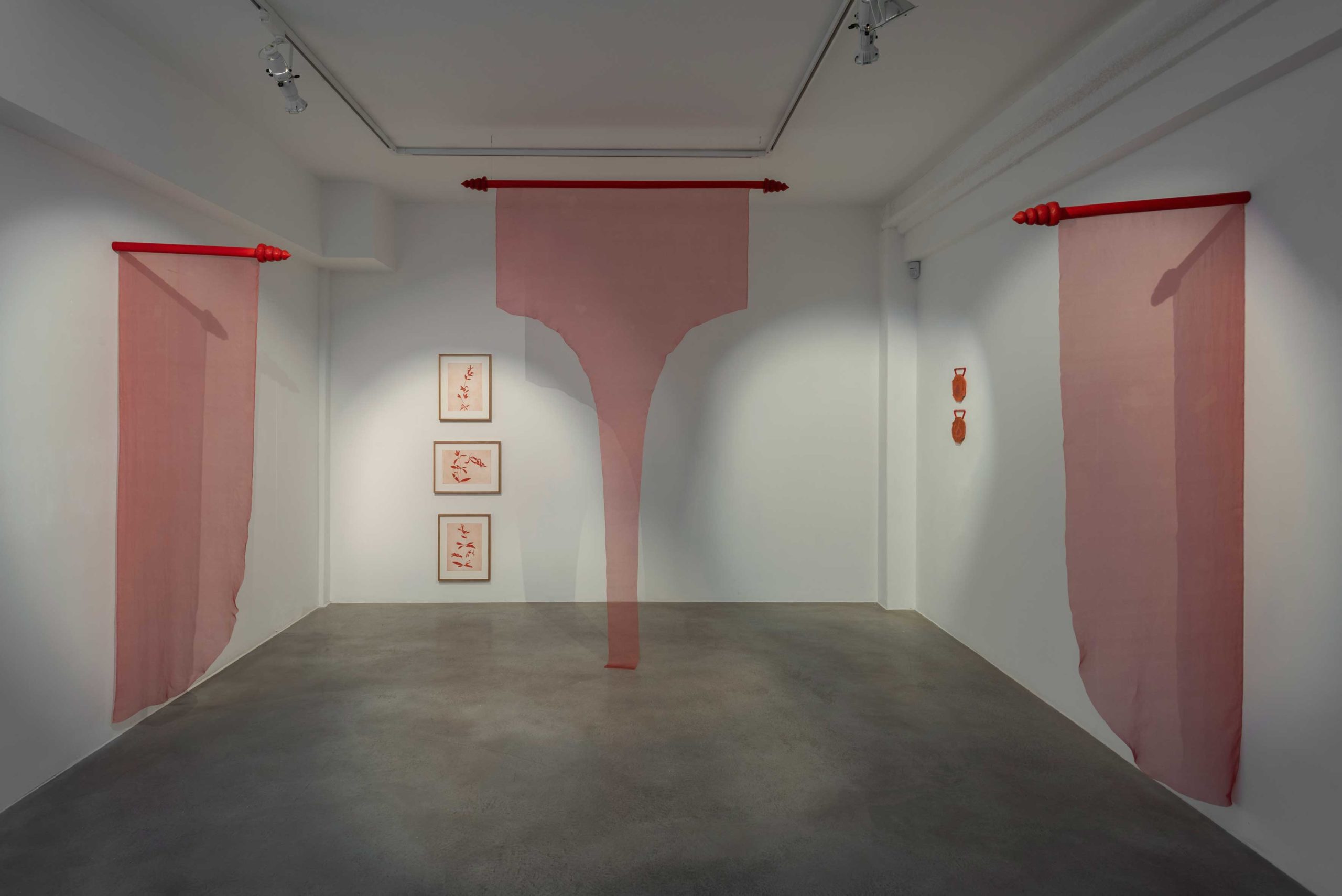Colours…should be understood as subjective cultural creations: you could no more meaningfully secure a precise universal definition for all the known shades than you could plot the coordinates of a dream.
Kassia St. Clair
‘Colours…should be understood as subjective cultural creations: you could no more meaningfully secure a precise universal definition for all the known shades than you could plot the coordinates of a dream.’
– Kassia St Clair.
Rubia Tinctorum is a plant with evergreen whorled leaves, delicate yellow flowers when it blooms, prized richly-red roots, and Gal Leshem is looking for it. In her ongoing series, Looking for Rubia Tinctorum, the artist traces the history of the plant through the use of its dye across visual culture. The roots of Rubia Tinctorum have been dried, then crushed and ground into powder, to make a dye, since at least 1500BC; there are traces of Turkish red or red madder (as the dye is named) in the tomb of Tutankhamun, in a painter’s workshop in Pompeii, it dyed wedding clothes in the Medieval era, and military uniform of the Roman and the British Empires.
Like all other plant species, Rubia Tinctorum has been categorised and labelled, broken down into families, genus and species according to its appearance, its blooming patterns and also its relation to others. This compulsion to organise and arrange things is driven by a need for definition and for applying descriptors and language so that we may communicate values to objects and so be able to tell a story. The impulse underpins Leshem’s search for rubia tinctorum. Adopting a research-led approach, Leshem performs an excavation of the plant’s roots as they have spread from the plant’s native ground of Persia and the Levant, across geographies, cultures and populations. Along its journey Rubia Tinctorum has morphed, has been assimilated, and, in so doing, has been re-classified according to its new functions, creating new signifiers and new language with which to build histories. Leshem’s installation is a visual response to this process.
The artist’s exploratory work reveals the Rubia Tinctorum diaspora. This exploration begins symbolically in the photographic transfer prints of the plant. Uprooted from the earth the plant’s stained silhouette floats against its white background. Groundless, the prints act as a referent for the other works in the installation as a reminder of their origin.

Rubia 3, 2021. Gal Leshem
The Rubia Tinctorum diaspora is wed to imperial histories and its trade. In the eighteenth century first the Dutch, then French, then British uncovered the means of producing the red madder dye which had long been a monopoly of the Ottoman Empire. The hanging drapery of Leshem’s installation speaks to the migration of Rubia Tinctorum through trade; it is most obviously reminiscent of military pageantry, the banners of empire hung from ornate finial-ended poles, yet the fabric Leshem uses is a light, transparent silk. This juxtaposition collapses histories of East and West, pointing to relations between the coloniser and the colonised and the resource exploitation that the imperial industrial complex requires. The two smaller banners of fabric that hang on either side are taken from the central panel, perhaps a gentle nod to this re-calibrating of histories and their interconnectivity, cut as they are from the same cloth.
The movement of populations is inherent to the concept of the diaspora, Leshem addresses this in her work through the cataloguing of Rubia Tinctorum’s different geographic uses. Her video piece, Red (White Other), documents the many traces of red madder pigment used in the clothing of bodies in Western paintings from the 15th-18th centuries – the plant’s dye stained into the history of its own migration. The jewel coloured drapery is indicative of colonial economies, dominance and exploitation (the video’s narration frequently refers to the blood spilt to create these histories); The painted fabric is a marker for the othering of diasporic body politics in its establishment of control of one over the other. It is a reminder of the use of different cultures to enrich another, while simultaneously establishing dominance and superiority. Leshem’s work then is not solely a document of geographical scope but an exploration of global geopolitics and its historical use.

Installation View of ‘Red (White Other)’, 2021. Gal Leshem | Looking for Rubia Tinctorum
Red, (White Other), expands beyond the historical, however, through the use of the artist’s present tense voice-over. The video work begins with the artist stating their name, Gal, G-A-L. By situating her own voice within the work, Leshem firmly roots her own body politik amongst the histories depicted. This presence is marked by the absence of her body, instead she uses her voice and manipulating effects so that it echoes through the work. Providing a critical distance, this action allows the artist to defy categorisation and negate the experience of Othering that the histories she explores entail.
The source of the diasporic histories Leshem examines is collective memory, which is fundamental to the assignment of value of cultural identities. As its name suggests collective memory is bound by a shared experience. It is often associated with diasporic communities as a means of organising histories of a community’s past for preservation into the future, and their relation to native and foreign geographies. Looking for Rubia Tinctorum invites a re-appraisal of collective memory. The artist narrates the gushing, rippling, glistening, signalling of the red dye, speaking over the whiteness of the video’s imagery. Leshem’s active address to the viewer in Red, (White Other) creates a space for the discussion of the histories with which the work is concerned.
What is valued by collective memory for preservation is mirrored by a collective forgetting of what is unvalued. This is most poignantly done when the artist asks ‘what are you doing here?’ to an image of a British Redcoat. The question lingers like the phantom of imperial power, forcing the viewer to question the structures by which Rubia Tinctorum has been weaponised, and re-evaluating the historical dynamics between colonial centre and periphery.
There is an inherent nostalgia in collective memory, tied to the concept of preservation and fear of loss. Within this longing is a suggestion of elusiveness. As the title of the work suggests, the looking is ongoing, it is active. In re-centring her work in the present, Leshem rejects the teleological formation of history in her excavations of the manifold histories and discourse of Rubia Tinctorum, proposing a more systematic approach. In doing so, she avoids the nihilistic pessimism of our drive to preserve, instead mobilising collective memory through the work’s expansive scope.
The work not only catalogues the histories of the Rubia Tinctorum diaspora, but reveals the complex structures which underlie our organisation of these histories. Looking for Rubia Tinctorum is revelatory in its exploration of these structures that construct history, and as a result presents a much broader view of them, which allows us to reconsider the relation of self and other and how these are systematically employed visually, linguistically and politically.
(By Alexandra MacKay)
